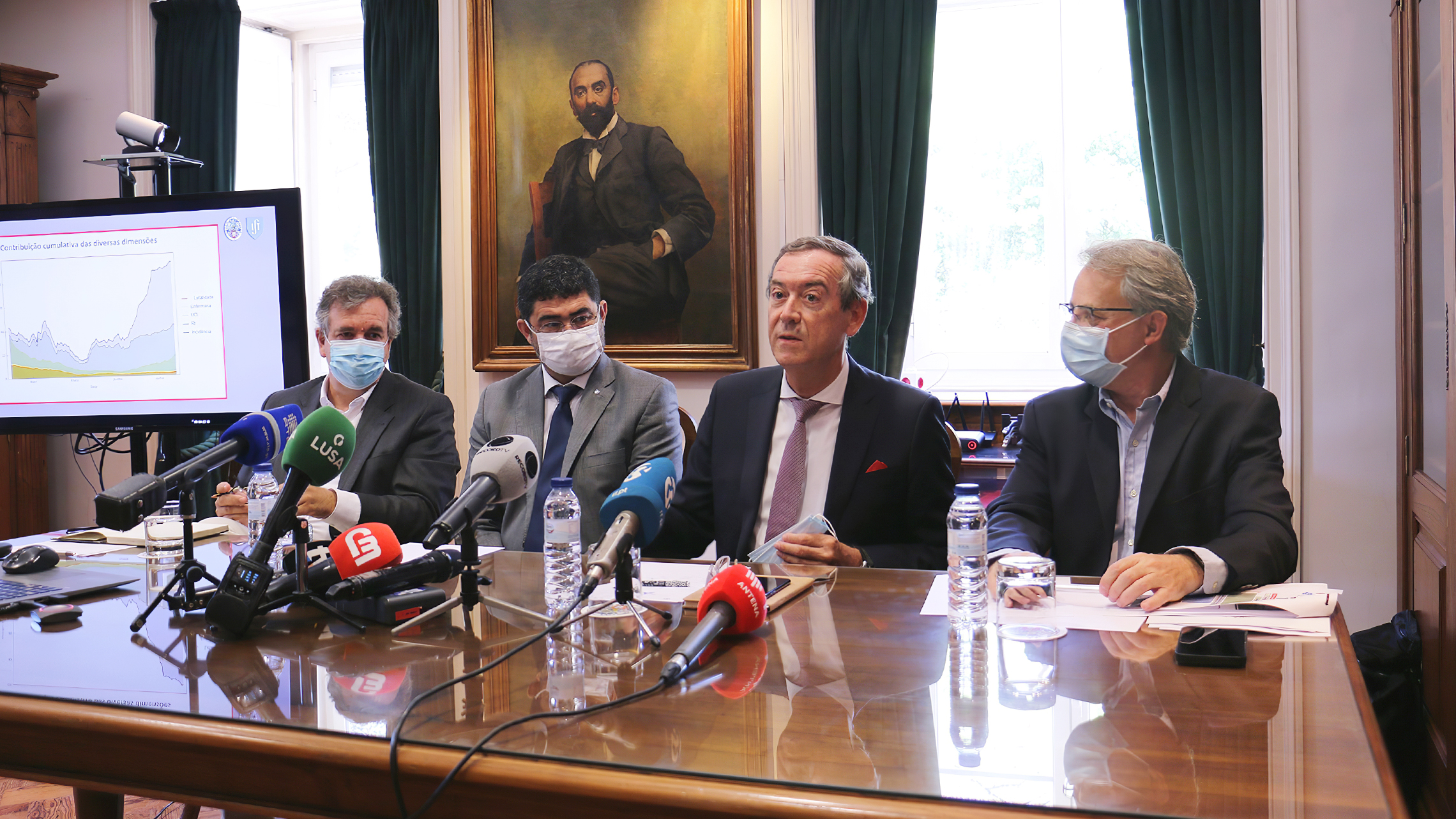Instituto Superior Técnico and the Portuguese Medical Association (OM) jointly developed an indicator that includes several relevant dimensions, considering the current circumstances of health situation, assessing the activity and severity of the COVID19 pandemic and determining what measures are be recommended. The work was presented during a session held on July 14th.
The new “Indicator for assessing the pandemic situation and the global impact on health” is based on five partial indicators or dimensions. It considers the two current COVID-19 risk matrix dimensions, incidence and transmission rate, but also the severity of the disease, based on lethality, hospital admissions and ICU admissions. “This indicator is not a risk matrix, it is an indicator that has a much more complex formulation, however, it is much simpler to understand”, highlighted the president of Técnico, professor Rogério Colaço. “It is an important and innovative contribution at national and international level”, he stressed. New variables can be can be easily added whenever necessary.

According to the authors, another differentiating detail is the calculation of incidence and transmission. Contrary to what has been done so far, the proposed model uses the number of COVID-19 new cases at seven days instead of 14, and a daily Rt, almost automatic. The indicator was developed by Técnico engineers and mathematicians – professors Henrique Oliveira, Rogério Colaço, José Rui Figueira and Ana Paula Serro – the president of the OM, Dr. Miguel Guimarães, and the pulmonologist and coordinator of the COVID-19 Crisis Cabinet at the OM, Dr Filipe Froes. The tool will soon be available on Técnico and OM websites.
“The pandemic in Portugal has been dynamic”, explained Henrique Oliveira, professor at IST Department of Mathematics (DM), and for that reason it is necessary to add other variables that mark the pandemic in Portugal, and whose proportions “have not been constant”. “The current risk matrix includes only two indicators, which gives a partial view of the problem”, stressed professor Henrique Oliveira. According to the president of the OM, the current risk matrix is “outdated” and “can’t keep pace with the pandemic evolution”.
